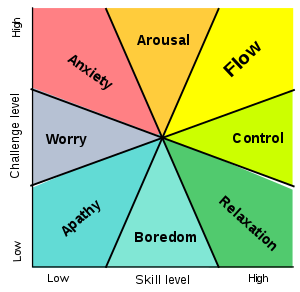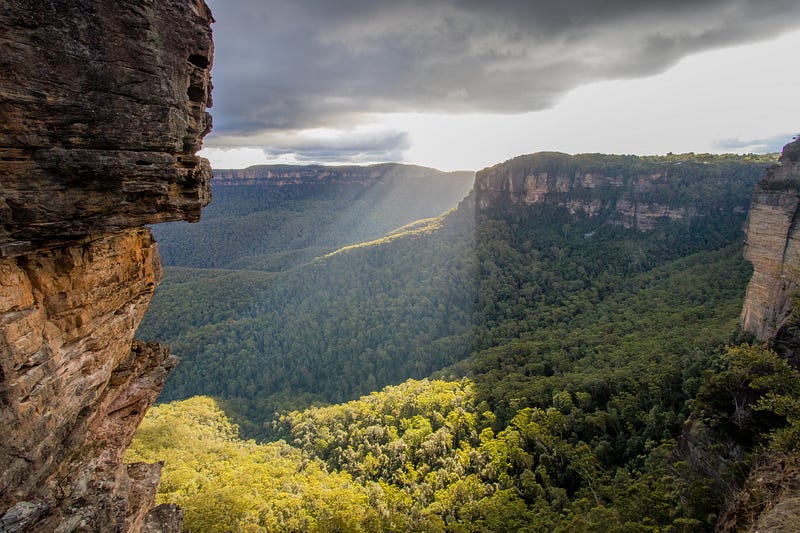How to Elevate Your Mind with Mushin No Shin
Apr 01, 2020
Mushin no shin means “mind without mind.”
It’s where your inner voice is silent and your mind is at peace. You act purely based on instinct. There’s no better feeling for a stress-ravaged brain.
I learned the concept from Karate masters in Okinawa but it is most famous because of Bruce Lee.
“Empty your mind, be formless. Shapeless, like water. If you put water into a cup, it becomes the cup. You put water into a bottle and it becomes the bottle. You put it in a teapot it becomes the teapot. Now, water can flow or it can crash. Be water my friend.” — Bruce Lee
He puts it beautifully but let me demystify the state for you. There’s no reason you can’t achieve this elevated mindset yourself.
Transcendence
My first experience of Mushin no shin came from elderly Karate masters. They could generate incredible speed and power without looking like they were even trying.
Since then, I’ve come to recognize it in many other places. In the dancer who sets the stage on fire but has a face without tension. In the yogi who moves with elegance and grace despite needing astonishing control. In the street artist who whips up a unique masterpiece in minutes.
I’ve been able to reach heights in martial arts and dancing where I can feel elevated. I’ve lost all conscious thought and am a mere observer as my subconscious takes over.
This high is why I’ve trained as hard as I have.
Generally in any task you do, you will pass through four stages:
- You’re unskilled but you aren’t aware of how to improve
- You’re unskilled but you know what you need to work on
- You’re skilled but you need to consciously focus to be so
- You’re skilled and can function purely on your subconscious
Many people quit karate once they receive their black belt. They think they’ve achieved it all. They are merely at the brink of stage 3. My skill grew exponentially in the years after becoming a black belt.
For Mushin no shin, you need to reach stage 4. It may take years or hours of training depending on what the task is.
There’s a balance. If you can reach stage 4 easily then the lack of challenge means the mind will be unsatisfied in the long term.
It’s why many runners enjoy running outside. Their minds can keep them running but on a treadmill they become bored. In the outdoors, their minds need to keep the consistency of pace, deal with inclines, other people, obstacles and other uncontrollable factors.
The Four Sicknesses
Most of us struggle to clear our thoughts because of what the Zen masters call the Shikai (four sicknesses). These unwanted emotions take us from our enlightened state.
I won’t pretend Mushin no shin is difficult to maintain. I’m not sure anyone truly frees themselves of the Shikai but you can reduce their impact over time. There’s no shortcut to this other than conditioning.
Kyo (Surprise)
I like to picture a meerkat when I think of kyo. Have you ever got yourself deep in the zone then a door opens or someone makes a sound? My eyes dart to the event and I’ve lost my mental freedom. Usually, external distractions have no impact on my task and I’m improving my ability to ignore them.
Ku (Fear)
Fear is a frustrating deadweight preventing us from fulfilling our potential. Last weekend, I did my first ever handstand. Nothing had changed. I didn’t suddenly get stronger or more balanced. I simply stopped being afraid of failing.
You don’t need to take on the world for Mushin no shin, it’s ok to start where you feel comfortable.
Gi (Doubt)
Most of us suffer from self-doubt at times. We don’t believe we are strong enough and cling to our comfort zone to feel safe.
Let go.
Be prepared so you aren’t in any danger then trust yourself.
Waku (Confusion)
Confusion will happen if you try to achieve an empty mind in an activity that you are not skilled enough for yet. We all know what it feels like to be overwhelmed when you’re thrown into the deep end. Train harder to build your skills to stop this.
Relying on our subconscious
Part of the reason we don’t get to Mushin no shin is that we don’t trust ourselves. We like to think our rational thought drives our success.
Did Michael Jordan try to work out the complex angles before he shot? Of course not, he trusted his subconscious!
According to Malcolm Gladwell’s Blink, our subconscious often makes better choices than our conscious mind. This is because we get fixated by the irrelevant. Our subconscious is rapid so skips this problem.
The more we train in a task, the more the calculations shift from conscious to subconscious.
It’s hard to trust ourselves when we are new and usually with good reason.
When I started practicing Kata, a complex series of moves in Karate, I needed to focus intently on the next move. I had to remember what seemed like a thousand variables.
After years of training, I can do an entire sequence relying only on my body. I would struggle to recall the moves if I was rusty but my muscle memory saves the day.
I think it’s especially obvious in dancers. A dancer trying to think about the next move stands out like a sore thumb.
“Dance like nobody’s watching” — Susanna Clark and Richard Leigh
There’s truth in the saying “dance like nobody’s watching”. You are free of the four Shikai and your mind is challenged to come up with new creative steps and stay on the beat!
According to Jonathon Haidt in The Righteous Mind, our emotions generally win anyway. All our conscious thoughts do is slow us down.
Mushin no shin is impossible to maintain all the time. Use your rational brain to analyze your performance afterward. Yet live in the moment when it’s time to perform!
Flow
If you are lucky enough to have experienced Mushin no shin, you’re probably nodding along with this. For those not yet convinced, there is growing psychological evidence for the existence of this state of mind.
Mihaly Csikszentmihalyi released a cornerstone study in 1990 with his findings on flow. This feeling of being in the zone is exactly what Mushin no shin represents.
Mihaly has been able to build on this work to better explain the unexplainable sensation. Scientifically, the mind can only deal with 110 bits of information per second. When this is reached and there is no space for reflective self-consciousness. Action and awareness are merged.

According to the nice colorful chart, “flow” is where a highly challenging task meets a highly skilled person. Sounds a lot like what we’ve been talking about doesn’t it?
Understanding his research has expanded my application of Mushin no shin. Honestly, I believed I could only achieve this state in hobbies. By being more open-minded I realized I can reach this state while working too.
For the writer, you can allow an empty mind in the first draft. Where words are flowing effortlessly through your fingers and you don’t allow doubt to stop you. It is the ecstasy of thundering your thoughts down as if nothing else exists in the world.
Often we aren’t allowed to reach this state because of constant interruptions at work. When you get a chance, throw your headphones on, tell everyone you are busy and let the magic happen.
How you can reach Mushin no shin
You already know
You may already have activities that put your brain into this state. Do you value them enough or are you too busy with something meaningless?
It saddens me when I talk to people who tell me how passionate they were about something. Past tense.
It’s fine if they’ve replaced it with a new passion but too frequently they haven’t. Your easiest path to Mushin no shin is by returning to the proven activity.
Discover your source
Any complex activity can lead to an empty mind. The critical bit is sticking at it long enough to reach the perfect blend of skill and difficulty.
Ideally, you want an activity with no end. In Karate, I can always kick harder and faster. Then you have a neverending stream of challenges.
I have a bias towards physical activity but the same logic applies to cognitive tasks. Tetris is a great example. The game gets more and more difficult pushing elite players into a state of total engrossment.
Games requiring rapid decision making are a great source of inspiration. People who’ve grown up playing games have built up astonishing skillsets.
Nature

The Japanese have a concept called Shinrin-yoku which means forest bathing. Some of you may have felt what I’ve described as an empty mind while hiking. Nature is an incredible tonic for the mind.
Shirin-yoku is about appreciating nature and a world greater than yourself. Going for a walk does not sound difficult but this is ignorant of the complexity of nature. Jared Diamond in Guns, Germs and Steel explains how the Papua New-Guineans had an unbelievable understanding of nature.
I believe for city dwellers such as myself, exploring nature with open eyes taps into a hidden part of our subconscious. Places such as Trolltunga in Norway have left my inner voice speechless.
Meditation
Dedicated meditation practitioners can achieve an empty mind by staying still. They can mimic the effects of a delicate balance between challenge and skill all in their heads.
I cannot but congratulate them. This is a level of transcendence beyond me at the moment. If you can reach this state then your challenge is to find it throughout your everyday life.
Use this power to overcome the four sicknesses in whatever task you are doing. Many would need to train their minds for years to reach this stage so do not waste it!
Summary
Mushin no shin is “mind without mind.” It’s a state of active enlightenment where your subconscious is the boss.
To achieve Mushin no shin
- You can achieve this state in a wide variety of activities
- You need a perfect balance between high skill and high difficulty
- Nature can be a shortcut if you let your mind free
- You’ve trained hard, trust your subconscious
- You must let go of surprise, confusion, fear, and doubt
- Finally, if you can truly empty your mind with just meditation then try to maintain this state in everyday life for the greatest benefits!
I hope you have enjoyed reading and have a great day!

